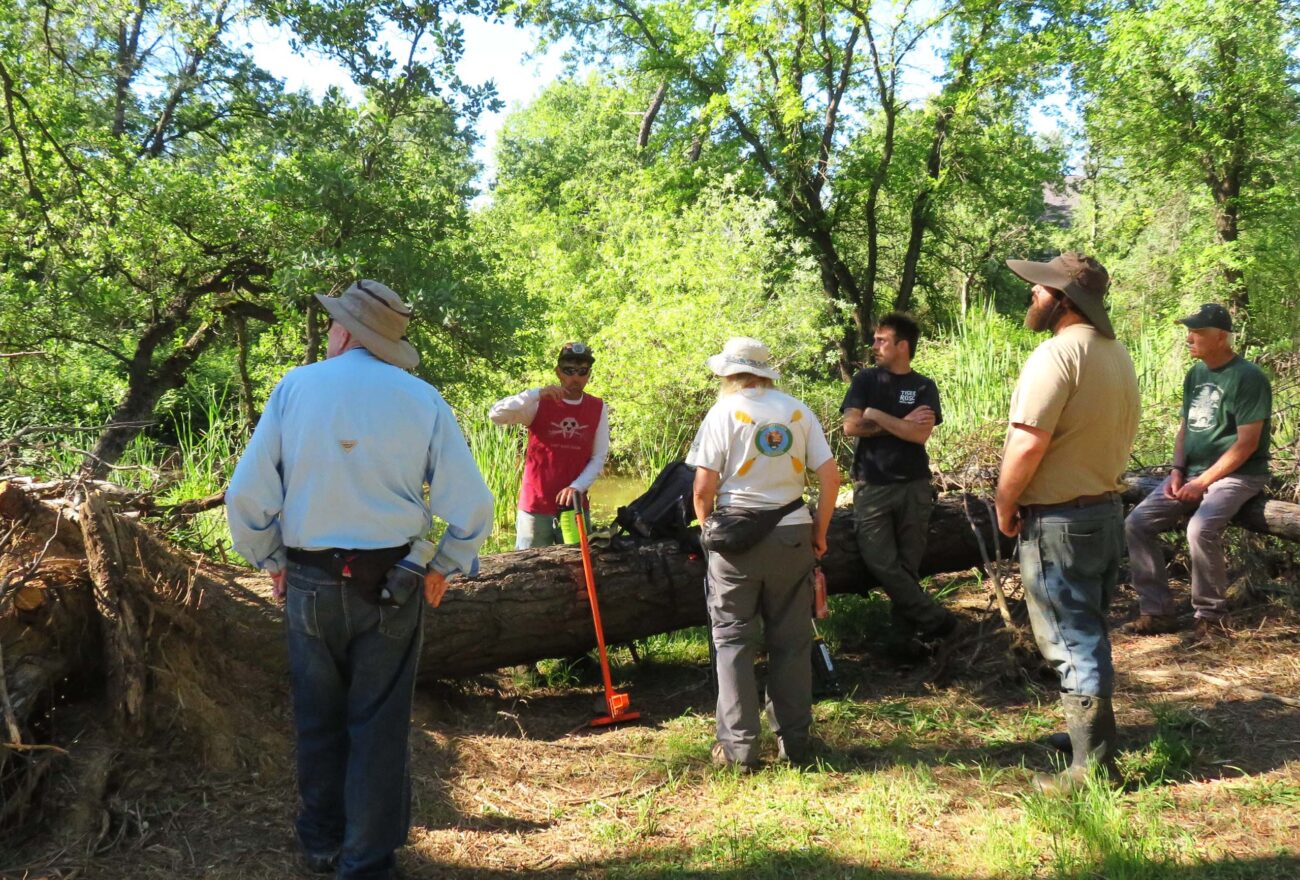
Jeremey Kelley of the Western Shasta Resource Conservation District (WSRCD) led this field trip to see a restoration project on the Lillian Nelson Nature Preserve within Redding city limits, near Bethel Church. As we walked the Preserve, Jeremey showed us an area where Boulder Creek had some naturally created berms that created a large pond and widened the flow of Boulder Creek into adjacent meadows. This is a beautiful area, literally in our backyard, with many birds, especially in the winter and spring. There are detention ponds on nearby City-owned land that fill with Boulder Creek overflow in the winter.
Jeremey also pointed out red sesbania (Sesbania punicea), also known as rattlebox—an invasive shrub in the pea family that has made it up the Sacramento River to Redding. The WSRCD is removing the shrub as their restoration project progresses. It can be pulled by hand when small and the soil is damp, or they use a weed wrench to pull it out by the roots. We also saw a demonstration plot entirely covered with tarps for use in determining how many invasive plants return after the tarps are removed. ~David Ledger

